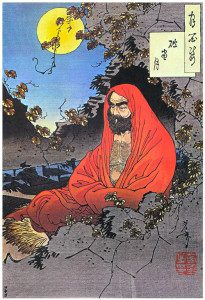Have you ever wondered where the known martial arts come from?
Personally I think that any form of fighting since the primitive era can be considered a sort of martial art, but the nowadays known asian martial arts have a specific point of origin:Kalaripayattu.
Kalaripayattu (or Kalari) is an ancient indian martial art that includes includes strikes, kicks, grappling, preset forms, weaponry and healing methods. It’s considered the oldest marital art in the world.
Students start with unarmed strikes such as punches and kicks, then they would move on to sticks, swords, spears, daggers and marmas.
So, who and when was created this Martial Art? The oldest reference to Kalaripayattu is described as a creation of Hindu Gods.
The first documentation about Kalaripayattu goes back to the 11th or 12th century AD. The fighting art was disseminated through schools (Kalari) where the fighting system was learned in more specific sessions known as Payattu Kalari (translated: Fighing School).
It’s easy to understand that almost everyone in India was practicing this fighting art since childhood and it was considered a highly recommended practice for strengthen the body, clear the mind and acknowledge natural healing methods.
With the advent of Buddhism, ancient indian monks begun traveling to China spreading their knowledge and also their fighting techniques.
 One in particular, BodhiDarma (known also as Da mo or Ta mo) founder of the ZEN buddhism and Kalaripayattu master left his hometown Kancheepuram (South Indian state of Tamilnadu) to go to China in 522AD.
One in particular, BodhiDarma (known also as Da mo or Ta mo) founder of the ZEN buddhism and Kalaripayattu master left his hometown Kancheepuram (South Indian state of Tamilnadu) to go to China in 522AD.
While he was at the Shaolin monastery he noted that the monks were missing physical and mental strength for appropriate meditation, besides, the monks were weak and frequently attacked by local bandits.
Bodhidarma begun to teach Kalaripayattu physical exercises to the monks in order to strengthen body and mind and made them able to defend themselves.
Respiration exercises and Ki channelling were included in the training and the whole training improved a much better meditation.
An interesting story about the life of Bodhidarma while in China was written by Yijin Jing during the Ming dynasty. It talks about 12 exercises developed by studying 12 different animals for 9 years. Bodhidarma taught the exercises at the Shaolin temple making the roots of most animal based martial arts and the bases for the development of the the modern kung fu and all other connected marital arts.
In any martial art now is possible to recognize the respiration and Ki (or Chi) channeling, also the Zen philosophy is often in use (especially in Japan Samurais) and many positions (stances) are similar with each other.
The Okinawan and also the Korean martial arts are rooted from the first principle of Shaolin, the Quan Fa, explained in the book “Ji Xiao Xin Shu” written by the MIng general Qi Jiguang.
In the Shaolin temple, which was found by an Indian Dhyana master Bhuddabhadra, a fresco can be seen showing Indian “dark skinned monks” teaching the art of “bare hand fighting” to “light skinned” Chinese monks. On the paining is visible an inscription: “Tenjiku Naranokaku” which translates as: “The fighting techniques to train the body (which came)from India”.
Kalaripayaddu is indeed the mother of most (if not all) martial arts.
Now if above claimed is right? how can we identify that taekwondo has some elements of kalaripayattu??
I am Shinto Mathew, ([email protected]) Gurukkal for kalari Kendram India(15 years teaching experiennce in kalarpayattu)
I am here in South Korea till August 5th of 2016
lets explore these two great martial arts..
Thank you


Recent comments